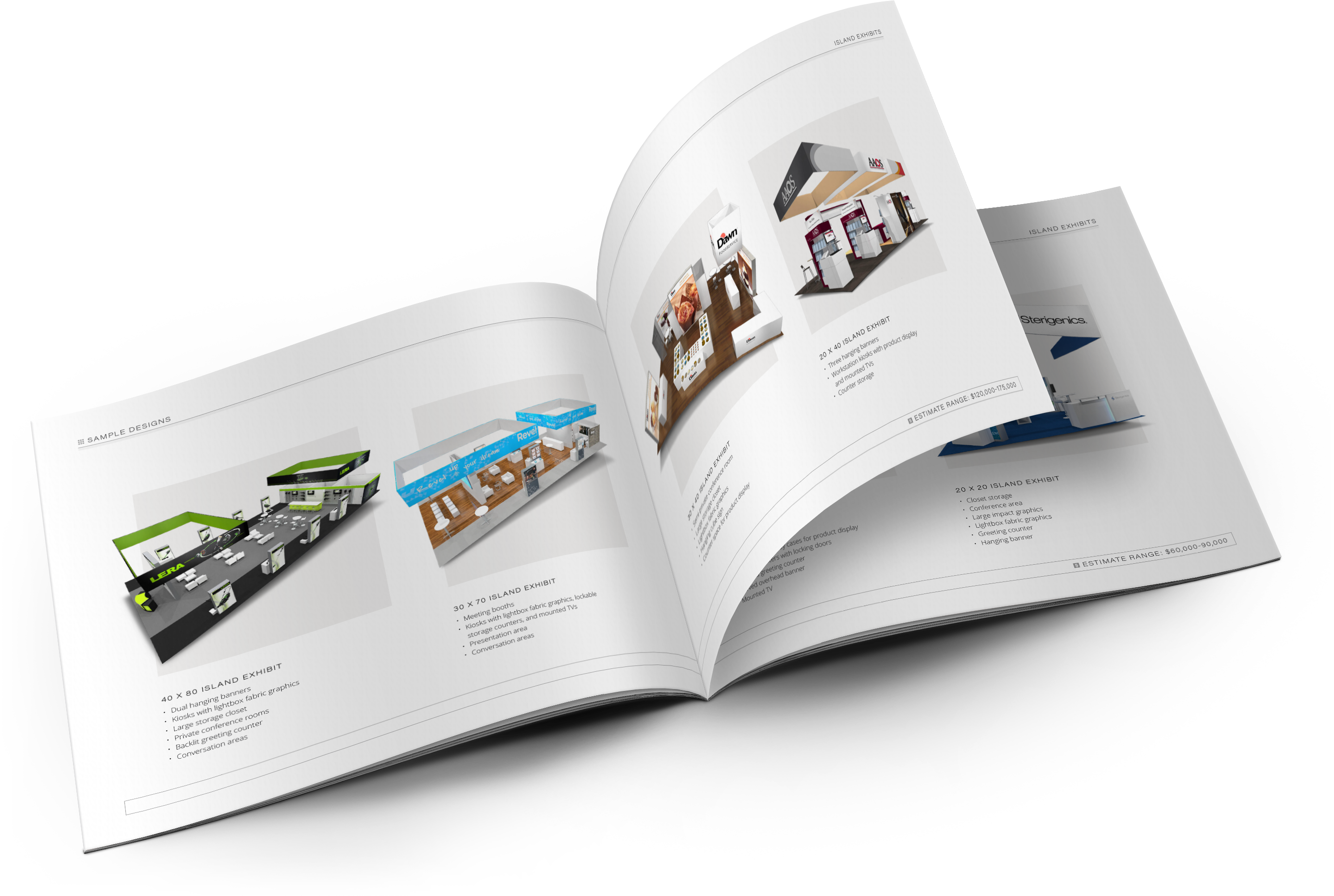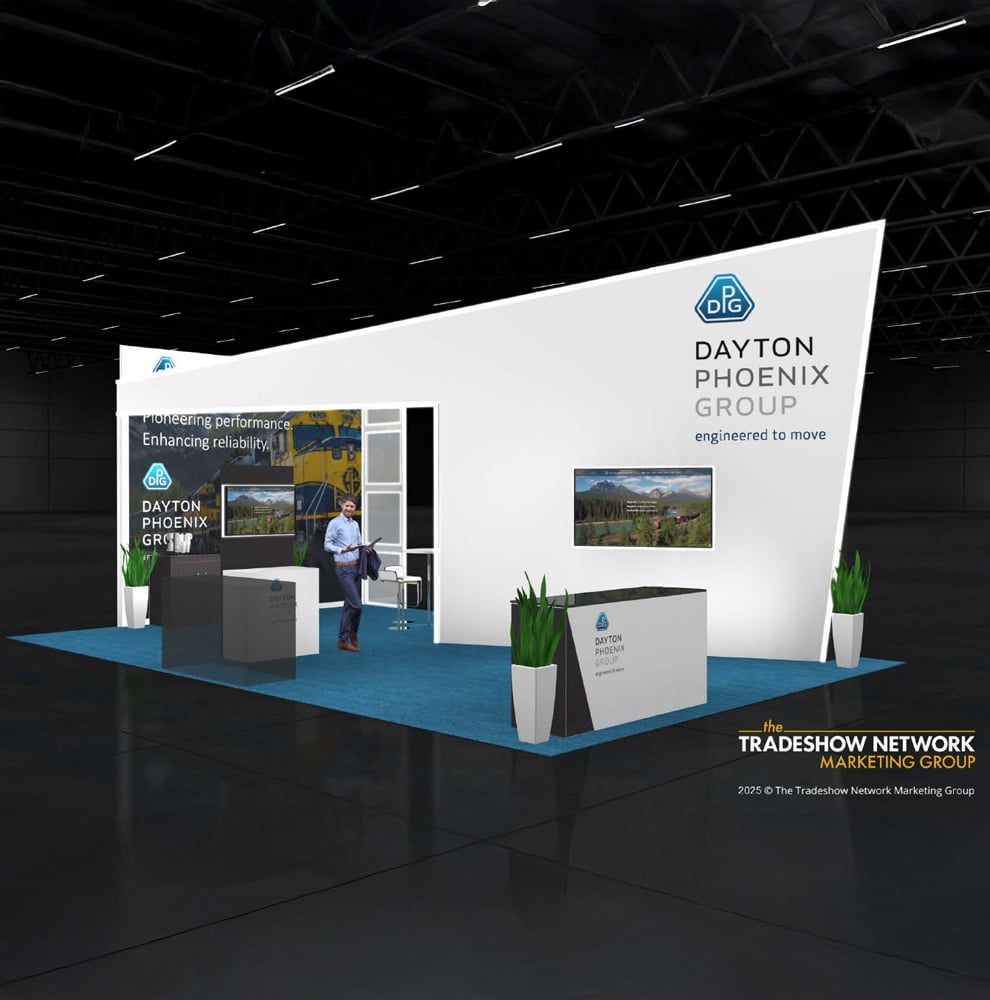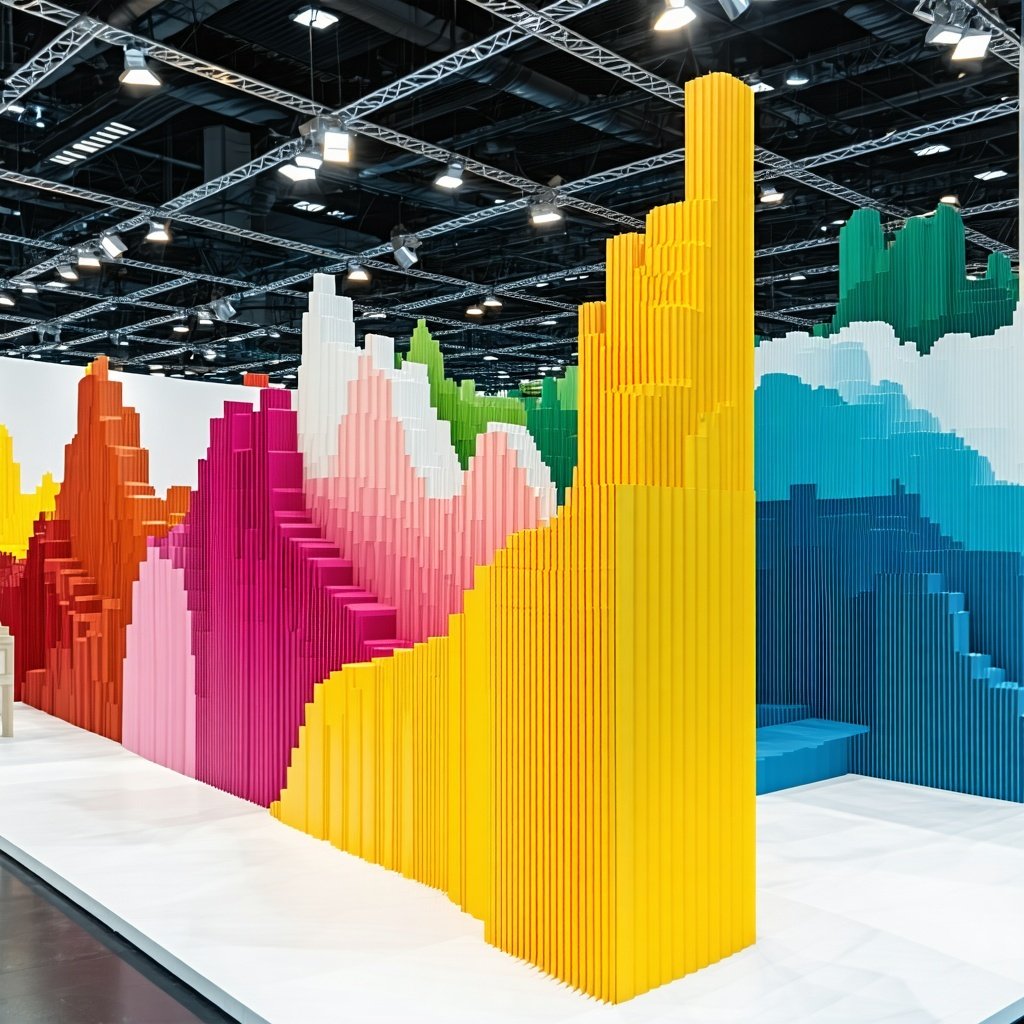Trade shows offer an unparalleled opportunity for companies looking to break into the North American market to showcase their brand and establish meaningful, lasting connections with potential clients and partners. These events serve as a dynamic platform where businesses can not only display their products and services but also engage directly with a diverse audience, gaining valuable insights and feedback. However, for those whose experience is rooted in exhibiting across Europe, Asia, or the Middle East, it becomes quickly apparent that North American trade shows operate under a unique set of guidelines and expectations. From the intricacies of booth construction to the subtleties of business etiquette, success in this arena often hinges on a deep understanding of local norms and practices. Navigating these differences is crucial, as they can significantly impact how your brand is perceived and how effectively you can connect with your target audience. To aid in this transition, we have identified 10 critical differences and nuances that every international exhibitor must comprehend before setting foot on a North American trade show floor. These insights will equip you with the knowledge needed to adapt your strategies, ensuring that your participation is both impactful and rewarding.
Booth Design Preferences Differ
Adapting your booth design to align with North American customs is a strategic move that can significantly influence how your brand is perceived by potential clients and partners in this new market. The design choices you make are not just about aesthetics; they communicate your understanding of local preferences and your commitment to engaging with the audience on their terms. In North America, the emphasis is often on creating an inviting and accessible space that encourages interaction and engagement. This means that while raised flooring is a popular choice in Europe and the Middle East for its ability to incorporate lighting and convey a sense of exclusivity, it is not commonly used in North American trade shows. Instead, most venues favor low-profile, carpeted floors, typically provided by the show contractor in the form of basic roll or tile carpet. This preference is not only about style but also about practicality and safety. Raised platforms can pose safety risks and often necessitate additional, costly union labor to install, which can complicate your setup and increase expenses. By understanding these nuances and adjusting your booth design accordingly, you can ensure that your brand is presented in a way that resonates with the North American audience, ultimately supporting your broader business objectives in this competitive market.
Union Labor Regulations and Differ by City
In many North American venues, particularly in the U.S., the use of union labor is mandated for nearly all aspects of trade show setup. This includes tasks such as unloading your crate, assembling your booth, and even the seemingly simple task of plugging in a monitor. For instance, in major cities like Chicago or New York, exhibitors are prohibited from running the electricity through their booths on their own. These regulations are not uniform across the country; they vary significantly by state and city, which can be particularly perplexing for international exhibitors unfamiliar with the local labor landscape. Therefore, it is essential to thoroughly review each venue's exhibitor manual and labor guidelines well in advance of the event. This preparation is crucial to ensure compliance and to avoid any unexpected complications. Additionally, partnering with a local service provider, such as Entourage X, who possesses a deep understanding of the regional labor jurisdictions, can be invaluable. Such partnerships can help you navigate the complexities of local regulations, thereby preventing potential delays, avoiding fines, and minimizing unnecessary costs on show day. This strategic collaboration ensures that your setup process is smooth and efficient, allowing you to focus on maximizing your impact at the trade show.
Lead Generation Is Your Number One Priority
In North America, trade shows are intensely focused on generating a return on investment, with lead generation taking center stage as a primary objective for exhibitors. Unlike other regions where the emphasis might be on brand exposure or fostering long-term relationships, North American trade shows demand a more immediate and measurable approach. Exhibitors are expected to actively capture and qualify leads directly from the show floor, utilizing a variety of innovative tools and strategies to maximize their reach and effectiveness. Many booths are equipped with advanced lead retrieval systems, such as scanning apps or interactive, gamified experiences, specifically designed to attract attendees and efficiently collect their contact information. This proactive, lead-focused approach is a stark contrast to regions where trade shows might lean more towards subtle brand promotion or relationship-building. In North America, the success of an exhibitor is often judged not only by the visual appeal of their booth design but also by the volume of leads they generate and the speed with which they follow up on these potential opportunities. For exhibitors accustomed to a softer selling style, this environment requires a significant shift in strategy. North American trade shows are characterized by their fast-paced, results-driven nature, where the ability to quickly engage and convert prospects is crucial to achieving a successful outcome.
Always Be a Proactive Seller in Your Booth
Expectations for booth staff are notably elevated in North America, where the role extends far beyond that of a mere greeter or someone who hands out promotional materials. In this region, attendees anticipate interacting with highly knowledgeable and proactive professionals who are not only well-versed in the company's offerings but also skilled in delivering compelling pitches and demonstrations. These staff members are expected to engage visitors actively, showcasing the ability to schedule follow-ups and nurture potential leads on the spot. The importance of body language cannot be overstated; passive or indifferent demeanor can quickly be interpreted as a lack of interest, potentially deterring valuable prospects. For instance, at many B2B trade shows, attendees often operate on tight schedules, with little patience for idle chatter or unproductive interactions. They are unlikely to linger at a booth without a compelling reason. Therefore, having your top salespeople or technical experts present on the floor is crucial. These individuals should be adept at initiating conversations, swiftly identifying and qualifying prospects, and tailoring their approach to meet the specific needs and interests of each visitor. This strategic deployment of skilled personnel can significantly enhance your booth's effectiveness, ensuring that every interaction is meaningful and contributes to achieving your trade show objectives.
Promotional Items and Swag Are Anticipated and Tactical
North American trade shows are renowned for their vibrant and engaging atmosphere, often enhanced by the strategic use of eye-catching promotional items, colloquially referred to as "swag." These items are not merely decorative or complimentary; they serve as powerful tools to draw attendees to your booth, significantly increasing foot traffic and engagement. The range of swag can be extensive, including everything from branded cups and tote bags to more technologically advanced items like wireless chargers and enticing raffled prizes. These giveaways are designed to be more than just freebies; they act as effective lead magnets, capturing the attention of potential clients and partners.
In many instances, booths leverage these giveaways as incentives for attendees to participate in activities such as badge scans or app signups, thereby facilitating the collection of valuable contact information. The key to maximizing the impact of these promotional items lies in selecting high-quality, valuable items that not only reflect your brand's identity but also leave a lasting impression on attendees. This strategic choice ensures that your brand remains top-of-mind long after the event concludes.
To capitalize on this opportunity, it is crucial to allocate a portion of your budget to these promotional items early in the planning process. Failing to do so could result in a missed opportunity to connect with your audience effectively. Entourage X, a leader in the industry, offers an incredibly vast array of promotional items tailored to meet any need or branding strategy. We invite you to explore our store for innovative ideas or reach out to us directly for personalized assistance in selecting the perfect swag to enhance your trade show presence.
Pre-Show Marketing is a Strategic Way to Boost Leads
In North America, the show doesn’t merely begin when the doors open; it commences weeks, or even months, in advance with a meticulously crafted pre-show marketing strategy. This proactive approach is essential for exhibitors who aim to maximize their impact and visibility. Exhibitors are expected to actively promote their participation well ahead of the event through a variety of channels, including targeted email campaigns, engaging social media posts, sponsored listings, and direct outreach to potential prospects. These efforts are not just about announcing presence but about creating anticipation and excitement around what they will offer at the show. At major trade shows, companies often leverage this period to tease upcoming product launches, secure meetings with key stakeholders in advance, or even send promotional items to high-value leads before the event. This preemptive engagement is crucial because if you wait until the event's first day to make connections, you risk falling behind competitors who have already established a presence in the minds of attendees. To further enhance booth traffic and distinguish themselves in a crowded exhibition hall, exhibitors should coordinate their marketing plans with the event’s promotional tools. This includes securing a spot in the online exhibitor directory or app, which serves as a vital resource for attendees planning their visit. By aligning these efforts, exhibitors can ensure they capture the attention of their target audience and make a memorable impression long before the event officially begins.
Higher Restrictions on Food & Beverage Offerings
Serving food and drinks in your booth might be a common practice in Europe, where such offerings are often seen as a way to create a welcoming and sophisticated atmosphere. However, in North America, this approach is generally not feasible due to the stringent regulations surrounding food and beverage services at trade shows. Most convention centers in this region have exclusive contracts with specific catering vendors, which means that bringing in outside food and beverages is typically prohibited. This policy is in place to ensure quality control and safety standards are maintained, as well as to honor the agreements made with the venue's contracted service providers. Even seemingly simple offerings like bottled water or candy can fall under these restrictions, requiring exhibitors to navigate a complex web of rules and permissions.
That said, the inability to bring in outside refreshments does not mean you have to forgo offering any treats to your booth visitors. Instead, it necessitates a strategic approach where you must coordinate with the venue’s approved caterer to provide refreshments. This often involves paying premium prices for the convenience and compliance of using the venue's services. Despite the added cost, providing refreshments can be a worthwhile investment, as it enhances the visitor experience and can make your booth more inviting.
Branded water bottles or individually wrapped snacks are usually considered safe bets, as they are easy to distribute and comply with most venue regulations. These items not only serve as refreshments but also double as promotional tools, keeping your brand in the hands of attendees long after they leave your booth. However, it is crucial to always double-check with the event organizer before placing any orders to ensure that your plans align with the venue's policies and to avoid any last-minute surprises. By adhering to these guidelines, you can effectively incorporate refreshments into your trade show strategy, enhancing your booth's appeal while remaining compliant with local regulations.
Business Communication Is Straightforward and Urgent
In North America, the culture surrounding business communication is characterized by a preference for directness, efficiency, and a transactional approach, which can be quite different from the more nuanced or relationship-focused styles found in other regions. This means that when engaging with attendees at trade shows, there is an expectation for a succinct and impactful elevator pitch that quickly conveys the essence of your offering. Attendees are often looking for immediate clarity on whether your solution aligns with their needs, and as such, lengthy introductions or overly formal greetings can be perceived as unnecessary and time-consuming.
At large-scale events, where the pace is fast and schedules are tightly packed, time becomes an incredibly valuable commodity. Attendees often have their agendas planned down to the minute, leaving little room for extended conversations that do not immediately address their interests or concerns. Therefore, it is crucial to be prepared with a concise and compelling message that highlights your unique differentiators and swiftly communicates the value of your product or service. This approach not only respects the time constraints of your audience but also enhances your ability to engage effectively and make a lasting impression in a competitive environment.
Data Privacy and Scanning Regulations Vary from GDPR Standards
While Europe has implemented the General Data Protection Regulation (GDPR), which imposes strict consent requirements and comprehensive guidelines for data collection and usage, North American trade shows operate under their own set of standards. These standards, while generally less stringent than GDPR, are nonetheless enforced by the event organizers to ensure compliance with local privacy laws and regulations. In North America, the practice of badge scanning is commonplace and anticipated as a method for exhibitors to gather attendee information efficiently. However, it is important to note that there are often limitations on how this collected data can be utilized post-event.
To navigate these regulations effectively, it is crucial for exhibitors to thoroughly review each show's privacy policies and terms regarding data usage. This due diligence is essential to understand the specific permissions and restrictions that apply to the data collected through badge scanning. Some trade shows incorporate badge scanning systems into their official lead retrieval services, which may require attendees to explicitly opt in to share their information. This means that exhibitors cannot assume they have unrestricted access to attendee data lists unless they have either paid for this access or obtained explicit consent from the attendees.
Therefore, it is imperative for exhibitors to be proactive in understanding and adhering to these privacy guidelines to avoid any potential legal issues and to ensure that their data collection practices are both ethical and compliant with the event's regulations. By doing so, exhibitors can effectively leverage the data they collect to enhance their marketing strategies and maximize their return on investment from the trade show.
In conclusion, successfully exhibiting at North American trade shows requires a strategic approach that acknowledges and adapts to the unique cultural and operational nuances of this market. By understanding the local preferences in booth design, navigating the complexities of union labor regulations, and prioritizing lead generation, international exhibitors can enhance their impact and achieve their business objectives. Embracing proactive selling techniques, leveraging promotional items effectively, and engaging in pre-show marketing are essential strategies to stand out in a competitive environment. Additionally, adhering to food and beverage restrictions, adopting straightforward business communication, and complying with data privacy regulations are critical to ensuring a seamless and compliant trade show experience. By integrating these insights into their planning and execution, global exhibitors can maximize their presence and success in the dynamic landscape of North American trade shows.




